How to Saute Properly with Confidence
Sautéing is one of the quickest, most versatile techniques you can master in the kitchen. Using a small amount of oil or butter and high heat, you cook thin or small pieces of food quickly, developing rich, layered flavors while keeping ingredients tender and vibrant.
It’s perfect for crisp-tender vegetables, thin cuts of meat, poultry, or seafood, aromatics like garlic and onions, or even tofu. Sautéing gives you great control: a quick toss here, a sizzle there, building flavor in real time.
Best of all, it requires no fancy equipment—just a good skillet, some heat, and a watchful eye. In this post, you’ll learn the essential tips, tools, and techniques to sauté like a pro, along with plenty of recipe ideas to spark your creativity.
Whether you’re a new cook or a seasoned one, sautéing will become one of your go-to methods for fast, flavorful meals. It opens up endless possibilities for delicious, satisfying cooking.
The Formula To A Great Saute
Saute Technique = Good Saute Pan + High Heat + A Little Fat + Uniformly Cut Ingredients
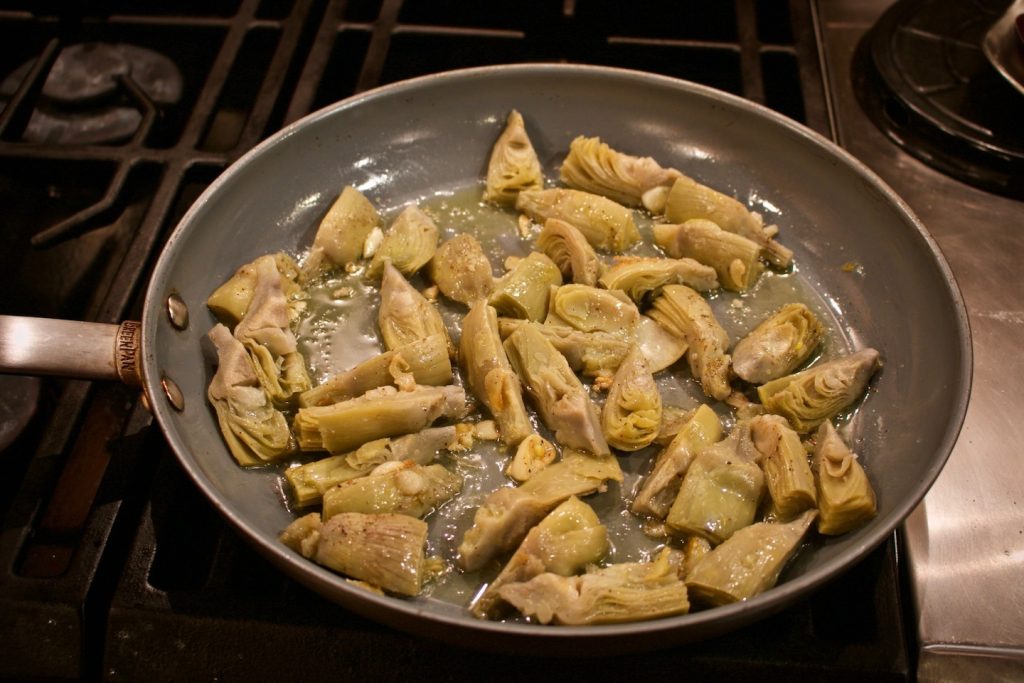
What Types of Foods Are Best For Saute
When it comes to sauteing, many different types of ingredients can be cooked using this method. In general, sauteing is an excellent technique for quickly cooking small pieces of food that are either dense or delicate in nature.
One of the most common types of ingredients to sauté is vegetables. Sauteing is an excellent method for cooking vegetables, as it allows them to retain their natural flavors and textures.
It is also a great way to cook a large quantity of vegetables quickly. Some of the best vegetables for sauteing include onions, garlic, bell peppers, mushrooms, zucchini, and broccoli.
In addition to vegetables, sauteing is a great technique for cooking seafood. Shrimp, scallops, and salmon are all excellent choices for sautéing, as they cook quickly and can be flavored with a variety of seasonings and sauces.
Overall, sautéing is a versatile cooking technique that can be used to cook a wide range of ingredients. So, whether you are looking to cook vegetables, meats, or seafood, sauteing quickly is a great option to consider.
| Food Type | Popular Dish Example | Wine Pairing |
|---|---|---|
| Chicken Breast | Chicken Piccata | Pinot Grigio or Chardonnay |
| Shrimp | Garlic Butter Sautéed Shrimp | Sauvignon Blanc |
| Mushrooms | Sautéed Mushrooms with Thyme | Pinot Noir |
| Spinach | Garlic Sautéed Spinach | Vermentino or Albariño |
| Zucchini | Sautéed Zucchini with Parmesan | Rosé |
| Beef Strips | Beef Stir-Fry with Vegetables | Syrah or Zinfandel |
| Scallops | Pan-Sautéed Scallops with Lemon Butter | Chardonnay or Champagne |
| Green Beans | Sautéed Green Beans with Garlic and Almonds | Grüner Veltliner |
| Tofu | Sautéed Tofu with Soy and Ginger | Riesling |
| Eggplant | Sautéed Eggplant with Basil and Garlic | Sangiovese |
| Bell Peppers | Sautéed Bell Peppers and Onions | Grenache |
| Pork Tenderloin | Sautéed Pork Medallions with Apple Compote | Viognier |
Prep the Ingredients Before You Start Cooking
Sautéing is a fast, high-heat cooking method. That means not every ingredient—or every cut—works well. Try sautéing a whole roast, and the outside will burn before the center cooks through.
Use Small, Uniform Cuts
Stick to thin or small pieces that cook quickly and evenly. For whole cuts like chicken breasts, pork chops, or steaks, keep them no thicker than ½ inch. If needed, pound them with a meat mallet to the right thickness. For stir-fries or mixed dishes, cut meat into ¾-inch chunks so they brown nicely without drying out.
Do the same with vegetables. Dice firmer ones like carrots, onions, and celery into ¼-inch pieces. Uniform size ensures even cooking. Small cuts allow heat to travel quickly from the pan’s surface to the center, helping you avoid raw middles or charred outsides.
Prep Before You Cook
One of the most common sautéing mistakes? Waiting to chop while the pan heats. It might seem efficient, but that’s how pans overheat. If the pan gets too hot before you add fat, the oil will smoke, break down, and force you to start over.
That’s why professional chefs use mise en place—a French term meaning “put in place.” It means you prep, measure, and organize everything before turning on the heat.
Follow this order:
Chop, mince, and portion every ingredient.
Heat your pan.
Add your fat and let it heat.
Add your food and cook.
This approach keeps you focused and in control. No scrambling. No burned garlic. Just golden, flavorful results.
Whether you’re working with aromatics, meats, or veggies, keep your cuts small and even. Finely mince aromatics so they release flavor quickly. If your pieces vary in size, the small ones will burn while the larger ones stay undercooked. That’s why knife skills matter—and why good prep always leads to better food.
Start With the Right Pan
Using the wrong pan is one of the easiest ways to ruin a good sauté. The right pan makes all the difference. It heats evenly, gives ingredients room to brown, and helps you build great flavor and texture with less effort.
Why the Right Pan Matters
Even Heat Distribution: A quality pan spreads heat across the surface. Cheap or thin pans create hot spots, which burn some ingredients and leave others raw.
Proper Space: Crowding your pan traps moisture and causes steaming, not browning. A wide surface gives every piece enough room to contact the heat and caramelize.
Steady Heat: Thin pans lose heat quickly. That kills your sear. Go with thicker pans—like stainless steel or cast iron—for consistent browning and great results.
| Feature | Details |
|---|---|
| Material |
Stainless Steel – Heats evenly and browns beautifully; ideal for searing and deglazing. Requires oil to prevent sticking. Cast Iron – Excellent heat retention; perfect for high-heat searing. Requires seasoning and care. Heavy and slower to respond to temperature changes. Non-Stick – Easy to clean and great for eggs or delicate items. Avoid metal utensils. Not ideal for deep browning. Replace when coating wears. |
| Shape |
Wide, shallow pans with sloped sides (skillet) allow easy tossing and stirring. Straight sides (sauté pan) are better for holding in liquids and reducing splatter. |
| Size |
Match size to task: 8-inch: Great for small portions or frying eggs. 10–12 inch: Most versatile for families and everyday cooking. Avoid overcrowding to maintain proper sautéing. |
| Handle |
Look for riveted or welded handles for durability. Stay-cool handles help prevent burns. Metal handles are oven-safe (check temperature limits). |
| Lid (Optional) |
A tight-fitting lid is useful for trapping steam or reducing sauces. Helps when switching between sautéing and simmering. Some sauté pans include lids; most skillets don’t. |
| Pan Types |
Sauté Pan: Straight sides, large surface, great for moist dishes like stews or braised meats. Often oven-safe and comes with a lid. Frying Pan / Skillet: Sloped sides make it perfect for dry-heat methods like sautéing, pan-frying, or stir-frying. Lightweight and maneuverable. |
| Maintenance |
Stainless Steel: Use a scrub pad or Bar Keepers Friend to clean. Not non-stick. Cast Iron: Clean without soap, dry thoroughly, and re-oil to prevent rust. Non-Stick: Hand wash recommended. Don’t overheat. Replace when scratched. |
| Best Uses |
Stainless Steel: Searing, deglazing, sauces. Cast Iron: High-heat searing, oven roasting, long cooking. Non-Stick: Eggs, pancakes, fish, low-fat cooking. |
Pre-Heating Your Saute Pan Is Crucial
WHY?
When I first started cooking, I burned food onto my pans constantly. I couldn’t figure out why. My pans looked smooth and shiny—so why did everything stick?
Then it hit me: I was cooking in cold pans.
If you zoom in on any metal pan, you’ll see tiny scratches all over the surface. Those little nicks give food places to grab on. And since meat, fish, and many sautéed foods are full of protein—and protein acts like glue—putting them in a cold pan just makes them stick harder.
Heat changes everything. As the metal heats up, it expands. That smooths out the surface and seals off those microscopic traps. A hot pan also sears the proteins quickly, forming a crust that lifts off clean.
Once I started preheating my pans, food stopped sticking. Problem solved.
Here’s how to check if your pan’s hot enough: flick in a few drops of water. If they sizzle and dance, the pan’s at least 212°F—hot enough to start. Since proteins brown at around 330°F, quick evaporation means you’re close. If the water just sits there, wait another minute and try again.
For me, four minutes of preheating usually does the trick. Try it. It’ll turn sticky messes into golden, crisp perfection.
Why Not Just Preheat The Fat With The Pan
You might think it would save time to heat the fat in the pan simultaneously, but this is not a good idea. As fats heat up, they start to degrade once they reach 140° F.
So, rather than let the fat continuously break down from 140°F to your ideal temperature, it’s better to add the oil to an already hot pan.
How to Preheat a Saute Pan?
I suggest you put the pan on medium-high heat, and when it is hot enough to evaporate a few drops of water, you know it has to be at least 212° F. This is a good starting point to add your fat. If you have the heat too high, you risk the chance of burning the fat. Too low, and the fat won’t be hot enough.
Remember, you are ready to cook as soon as your pan becomes preheated, then you add your butter and/or oil. You may have to crank up your heat before you start to sauté. This is because the butter or oil will bring down the pan temperature.
Interesting Point About Heating A Pan
If you put it on low heat, won’t the pan keep getting hotter and hotter? That’s what I used to think, but the answer is no.
The pan will only get as hot as the amount of heat (BTUs) you apply. If you preheat a pan on low, it would get to a maximum temperature, and that’s it. To get more heat, you must add more BTUs or, like a gas stove, more flame.
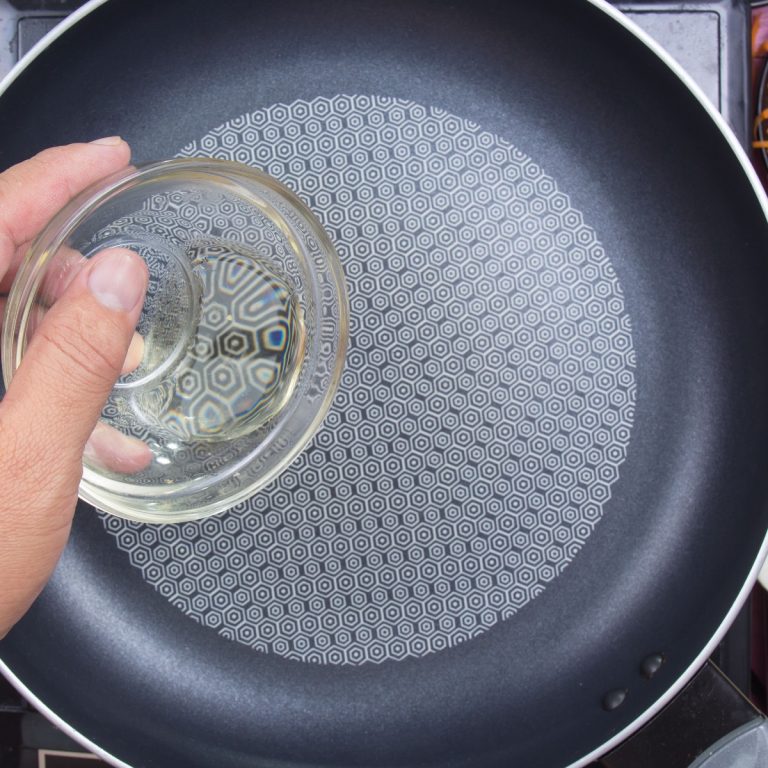
The Right Fat – Butter or Oil or Both?
Sautéing is all about balancing heat and fat. To get that quick, even browning, you need a hot pan—at least 330°F. But here’s the catch: many common fats start to smoke and break down before they hit that temperature.
Butter, for example, has a smoke point of 350°F. It gives food a rich flavor and beautiful golden crust, but it burns fast. Oils have higher smoke points—anywhere from 375°F to 450°F—and handle high heat better, though they don’t deliver the same depth of flavor.
Here’s a quick guide to smoke points:
Extra virgin olive oil – 320°F
Butter – 350°F
Vegetable shortening – 360°F
Refined canola oil – 400°F
Peanut oil – 440°F
Looking at those numbers, you can see why extra virgin olive oil isn’t great for sautéing—it starts smoking before your food even browns. When oils smoke, they break down, creating bitter flavors and even harmful compounds. That’s why refined oils like canola or peanut oil are better choices for high-heat cooking.
Still want that buttery taste? Mix it with oil. I like to use half butter, half oil. The oil raises the smoke point, while the butter adds flavor. Once the pan is hot, add the oil first, then swirl in the butter. When the butter melts and starts bubbling, it’s go time.
You can also match your oil to the dish. Olive oil works well in Mediterranean recipes, while sesame oil fits better in Asian dishes. But because high heat destroys many subtle flavors, it often makes sense to cook with a neutral oil like canola or safflower and add the specialty oil at the end for flavor.
How much fat should you use? It depends on what and how much you’re cooking. For two or more chicken cutlets, use 1 to 1½ tablespoons each of oil and butter. For fish fillets, ½ to 1 tablespoon of each should do the job.
With the right fat and a hot pan, you’ll get that golden crust and amazing flavor—no smoking, no sticking, just perfect sautéed results.
How Much Fat?
Just enough to coat the bottom of the pan. You are not deep frying, so cover the bottom of the pan. When a recipe tells you to add two tablespoons of oil to the pan, how do they know what size pan you are using?
Adding two tablespoons to a small pan may be too much. 2 tablespoons in a large pan might not be big enough. So add accordingly.
Go Easy On the Cooking Fat
You might feel like a pro chef when you generously pour fat into your pan for sautéing. But here’s the catch—using too much oil changes the whole game. Instead of sautéing, you end up pan-frying.
When you add more fat than needed just to coat the bottom, the oil pools up, creating depth. Your food then sits in hot fat instead of on a thin, even layer. That’s pan-frying, not sautéing.
A big reason home cooks add too much fat is that they start by pouring it into a cold pan. Cold fat is thicker and won’t spread out thinly like hot fat does.
Remember the winning sequence: heat your pan first, then add the oil. Let the oil warm up, and then add your food. You’ll probably only need about a tablespoon of fat.
Give your hot pan a quick swirl—your oil should spread out smoothly, coating the surface. The fat acts as a heat conductor here, helping cook your food evenly. In sautéing, fat works more as a cooking medium than just an ingredient.
When do you get to toss or jump your food in the pan? You usually don’t for presentation-worthy cuts of meat. But when sautéing veggies, go ahead and have some fun tossing them!
(Pro tip: Practice tossing dried beans in a cold pan before you try flipping 350°F onions over a blazing stove. Your fingers will thank you!)
How Much Heat Should You Use When Sauteing?
When sautéing, you should use medium to medium-high heat—hot enough to brown food quickly without burning it.
Here’s a breakdown of how much heat to use and what to watch for:
| Heat Level | When to Use It |
|---|---|
| Medium-High Heat | Ideal for most sautéing. Hot enough to sear meat or brown veggies quickly. |
| Medium Heat | Good for delicate items like garlic, onions, or fish that burn easily. |
| High Heat | Use briefly to sear thin meats or stir-fry small pieces fast—watch closely! |
| Low Heat | Not suitable for sautéing—it steams food instead of browning it. |
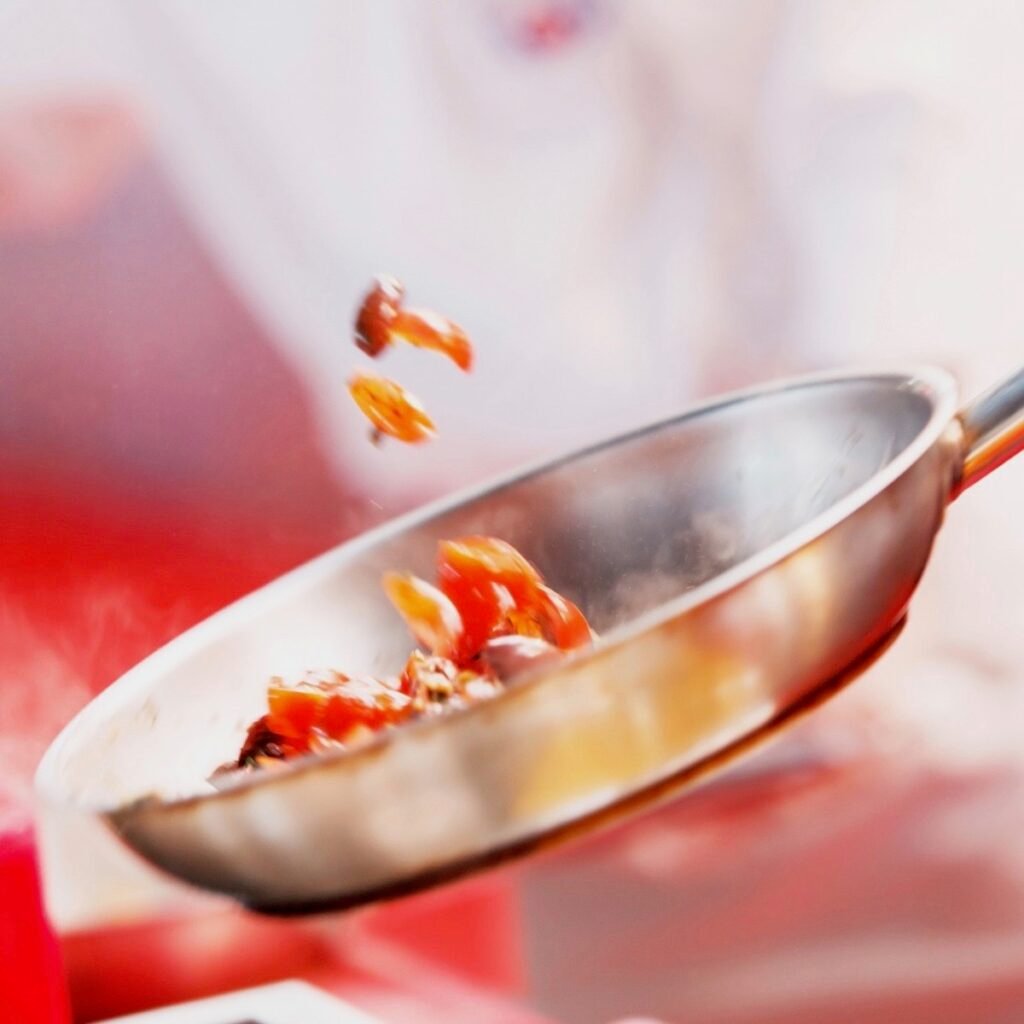
Basic Sauté Technique
Start by heating your pan before adding fat. If you’re using butter, you’ll know the pan is ready when the butter stops foaming and turns pale brown. If you’re using oil, watch for it to change from smooth to lined or shimmering—this means it’s hot enough to start cooking.
Be careful not to let the butter or oil smoke. If it starts to smoke, it’s too hot—remove the pan from the heat, wipe it out, and start over.
Once the oil shimmers, add your ingredients. For example, when I heated canola oil to just below its smoke point (about 435°F), I tossed in diced onions—and a few pieces literally jumped from the pan (that’s the sauté in action!).
Work quickly and don’t crowd the pan. The moment you add food, the pan will cool slightly. If the oil does begin to smoke, simply lift the pan off the heat for a few seconds to bring the temperature back down.
Cooking times vary depending on what you’re sautéing. Keep an eye on color, aroma, and texture to know when your food is perfectly done.
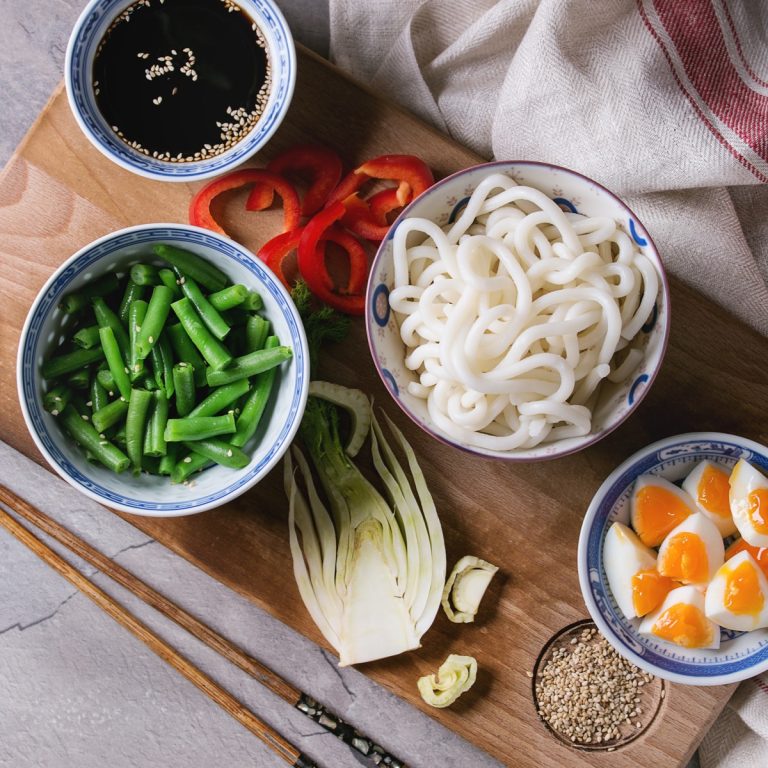
Don’t Overcrowd the Pan
As busy home cooks, we often try to speed up dinner prep, and sautéing seems like the perfect shortcut. But when you crowd too much food into the pan, you slow things down and miss out on that delicious golden sear.
Spread your food out in a single layer so each piece has room to breathe. This is especially important when sautéing small items like diced vegetables. When ingredients overlap, they trap steam, and the pan stays at 212°F—the boiling point of water—instead of climbing high enough for browning.
Sautéing thrives on dry, high heat. To get a good sear, the moisture needs to evaporate quickly. That won’t happen if your pan is too full.
If you’re cooking something like chicken breasts in a smaller pan, work in batches. It may feel like it takes longer, but each batch will cook faster and taste better.
You’ve probably seen this with stew meat: add too much at once, and it releases liquid, steams instead of browns, and robs you of those deep, rich flavors that only develop around 330°F. So take your time—good sautéing rewards patience with amazing taste.
Pay Attention
When you place a piece of meat in a hot pan, you can’t see what’s happening on the side touching the surface. All you see is raw meat, and that can tempt you to poke, lift, or flip it prematurely.
You could lift the edges to check for browning, or even flip the meat altogether. But when you move it too soon, you risk tearing the surface or leaving it with a weak, uneven sear.
Even though you can’t see the bottom, the top gives away plenty of clues. When you first add meat to a hot pan, you’ll hear that satisfying sizzle. That’s your cue that the pan’s doing its job.
After about a minute, watch the edges of the meat closely. They’ll start to shift from translucent to opaque—your first sign that the proteins are cooking. Now, resist the urge to move it. Just let it be.
As the heat drives out moisture, you’ll see tiny beads of liquid forming on the top. Then, a ring of opaque meat will slowly creep up from the edges toward the center. When it looks like the meat is about two-thirds cooked through, go ahead and flip it.
If you’ve waited long enough, the meat will release easily. That’s one of the best signs you’ve achieved a proper sear. On the second side, cook it for another minute or two—just long enough to finish the job.
To check for doneness, use an instant-read thermometer. For thin cuts like chicken breasts or pork chops, remove the meat when it’s 2 to 4 degrees below your target temperature. The carryover heat will bring it the rest of the way as it rests.
This hands-off, observant approach takes the guesswork out of sautéing and gives you beautifully browned, juicy results—every time.
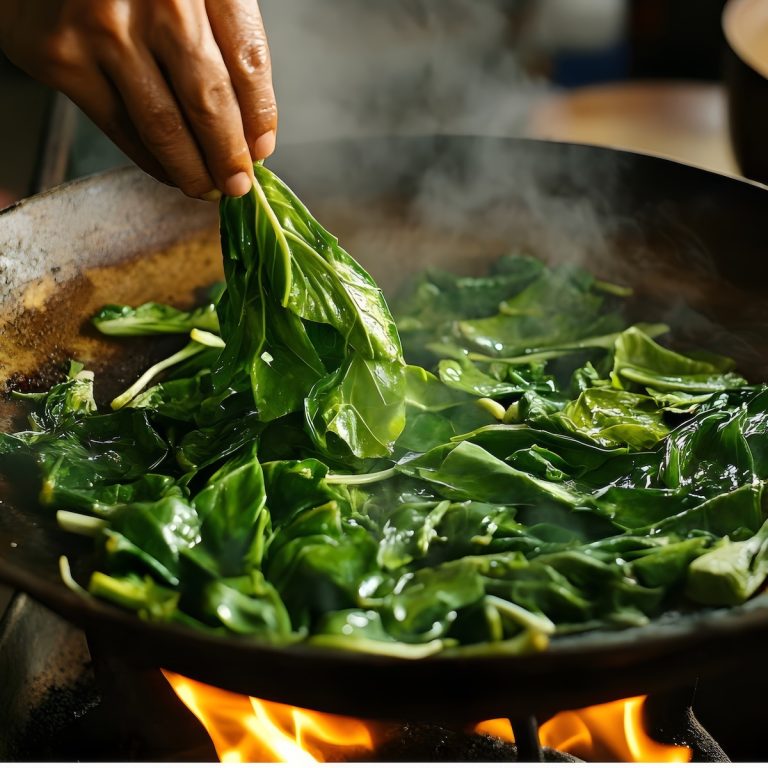
Common Mistakes People Make When Sauteing
| Common Mistake | Why It’s a Problem | How to Avoid It |
|---|---|---|
| Not preheating the pan | Food sticks and cooks unevenly | Always heat the pan first, then add fat |
| Using cold ingredients | Lowers pan temperature, leads to steaming instead of sautéing | Let ingredients sit at room temp for 10–15 mins before cooking |
| Overcrowding the pan | Causes steaming instead of browning | Cook in batches if needed, don’t overcrowd |
| Letting oil or butter smoke | Gives food a burnt flavor | Watch carefully for shimmering (oil) or pale browning (butter); remove from heat if smoking starts |
| Using too much fat | Makes food greasy | Use just enough to coat the pan lightly |
| Not moving food enough | Leads to uneven cooking and burning | Stir or toss food regularly for even browning |
| Moving food too much | Prevents browning | Let food sit briefly to develop a good sear before stirring |
| Using the wrong pan | Uneven heat prevents good sautéing | Use a heavy-bottomed skillet or sauté pan, not nonstick for high heat |
| Ignoring visual and aromatic cues | Misses perfect doneness | Watch for color, aroma, and texture as you cook—not just the clock |
Sautéing vs. Pan-Frying: What’s the Difference?
It’s easy to think of sautéing as any kind of stove-top cooking in a skillet—but by definition, sautéing refers to cooking small or thin pieces of food quickly over high heat with a small amount of fat, while moving the food around the pan. The goal is fast cooking with even browning, keeping the texture tender and the flavors bright.
When you’re working with larger or thicker cuts of meat, like a whole chicken breast, the technique shifts slightly. Because thicker pieces need more time to cook through, they’re typically pan-fried instead.
You start by browning one side, then the other, often lowering the heat to finish cooking gently. You might even finish the dish in the oven.
So if you want to truly sauté chicken, slice, cube, or pound it thin. If you prefer to cook a whole breast, you’re technically pan-frying—still delicious, just a slightly different method!
Can You Saute a Whole Chicken Breast?
You can sauté a whole chicken breast, though there are a few tips to make it work well.
Since a whole chicken breast is relatively thick, the key is to either:
Pound it to an even thickness (about ½ to ¾ inch thick), or
Butterfly it so it cooks quickly and evenly in the pan.
- Cutting it into pieces (like strips or cubes) is another excellent option, especially for stir-fries or faster meals, but it’s not required. It depends on the dish and the texture you want.
If you sauté a thick breast without thinning it out, you risk having the outside brown before the inside is fully cooked.
When properly prepared, sautéing a whole chicken breast gives you a beautifully golden, flavorful crust while keeping the meat juicy. It’s how dishes like Chicken Piccata or Chicken Marsala are typically prepared—whole breast sautéed, then finished with sauce.
Don’t Forget a Pan Sauce
Since sautéing uses dry heat and works best with lean cuts, your meat will develop great flavor from browning—but it might turn out a little dry due to moisture loss. That’s perfectly normal. Now, take a look at your pan.
See those golden to dark brown bits clinging to the bottom? That’s fond, and it’s packed with concentrated flavor. Don’t let it go to waste—turn it into a quick, delicious pan sauce.
The Fix — Make a Quick Pan Sauce
You’ve already saved time by sautéing, so don’t worry—this sauce won’t take long. You can make it while the meat rests, elevating your dish in minutes.
Let’s say you’ve cooked three chicken breasts for four people. You only need a tablespoon or two of sauce per serving—just about ¼ cup total. That’s quick work over high heat.
Place your sauté pan back over high heat and give it a minute to warm up. Watch closely—you want the fond to stay dark and flavorful, not burn.
Pour in ¼ cup each of orange juice and low-sodium chicken broth. Use a wooden spoon or spatula to scrape up the fond as the liquid simmers. Let the sauce reduce by half until it turns thick and syrupy.
Taste and adjust the seasoning with salt, pepper, or a sprinkle of fresh herbs.
Off the heat, swirl in a teaspoon of butter or a splash of heavy cream to add richness and a velvety finish. Or skip it—your sauce will still shine.
Drizzle a spoonful over each piece of meat and watch how it transforms the dish.
This is just one idea, but the method stays the same. A quick reduction, a splash of flavor, and you’ve turned simple sautéed meat into a complete, elegant meal.


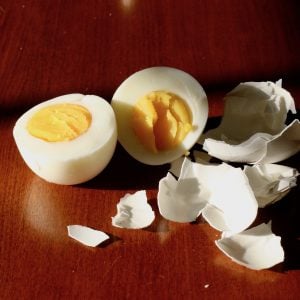
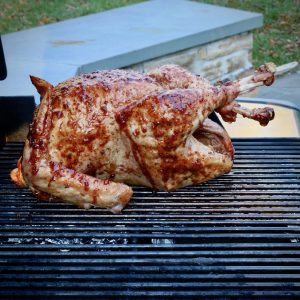
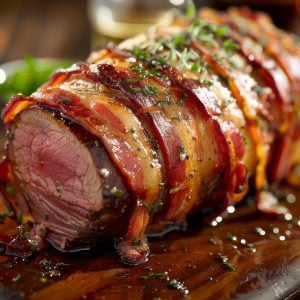
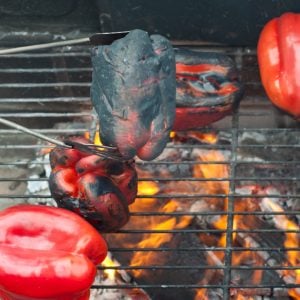

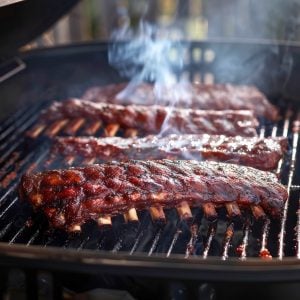
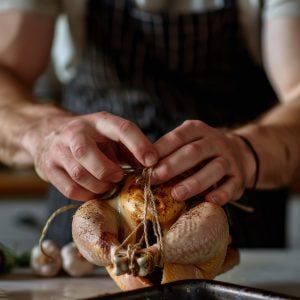
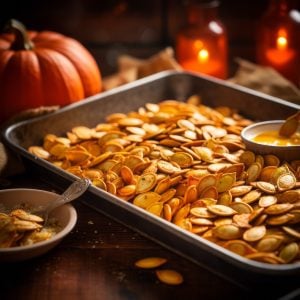


10 Responses
Thanks, that was very helpful.
how do i choose what type of meat if best to saute?
With red meat, only tender cuts can be employed. Because it is a dry heat method, sautéing will make tough cuts of meat even tougher. Thus, you can sauté a filet mignon or strip steak, but never the shank or brisket.
Anyway to tell what temperature your stove is on without a thermometer, cause I have a gas stove and it only goes by low numbers(2-10). I put it on 4 because 6 seems too hot (or maybe I wait too long), but it still steam immediately. Can it also cause steaming immediately if you don’t put enough of fat?
Hi Sharelle,
Steam can happen even before your fat is hot enough, and here’s why:
Too little fat – If there’s not enough oil or butter, water released from food doesn’t have room to spread and evaporate fast. It steams and simmers instead.
Crowded pan – Too much food too fast drops the pan’s temp. Steam builds before browning starts.
Wet ingredients – Moisture on veggies or meat creates instant steam. Pat them dry with paper towels before cooking.
Pan not hot enough yet – Even on medium heat, a pan might not be fully preheated. Always wait until the oil shimmers (or butter bubbles) before adding food.
Really excellent, specific teaching, yet explained well enough for a first timer like me. Tomorrow will be the test and this stuff is Gold!
Many thanks.
Dan
“The Reluctant Gourmet uses a combination of the two. This way I get some of the flavor from the butter and a higher smoking point from the oil.”
You realise that the butter is going to burn to matter how much oil you add to it? It’s the solids in the butter that burn.
Use Clarified butter .
Clarified butter is probably one of the most important ingredients to any chef. You will never find a professional kitchen without an abundant supply of this liquid gold! Except for fast food places. If you removed any ingredients from a saute station, that person could make do with something else. Take away their clarified butter and they walk out!
Using half oil and half butter is an ancient frying technique in some regions of Europe (e.g. in Piedmont). My grandmother always used to fry with half-half; so do I, with exceptions. The butter will NOT burn (unless you neglect it, of course).
Regarding clarified butter: I love it – make it myself (as well as beurre noisette) – but it does not impart he same full flavour that good butter does.
Teeton9, butter contains about 15–20% milk solids and water, and those solids burn quickly, usually around 350°F (177°C). That’s why pure butter starts to brown or smoke even at medium heat.
When you mix butter with oil: The oil raises the overall smoke point of the mixture. It dilutes the milk solids, slowing their browning. The pan stays hot enough to sauté while reducing the risk of burning the butter.